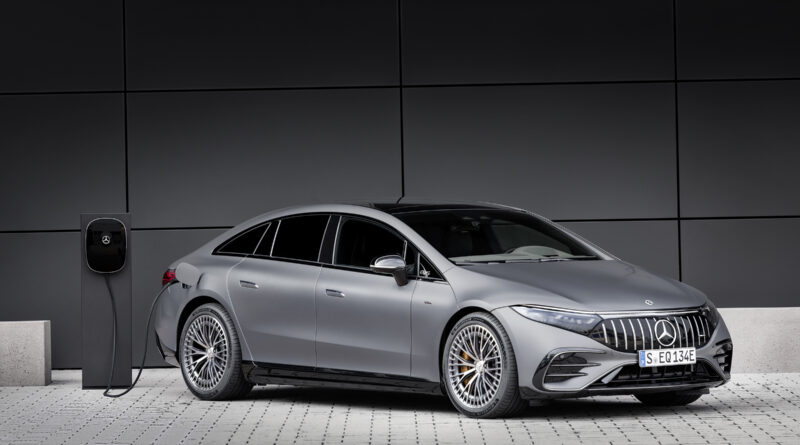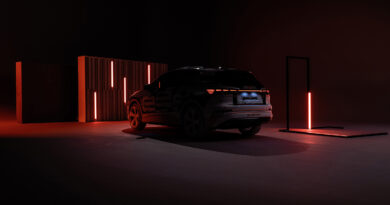Mercedes-Benz AMG’s EV strategy revealed: from axial flux motors to ’63’ pace
Power-dense battery packs that prioritise performance over driving range and axial-flux e-motors are the key ingedients of future Mercedes-Benz AMG EVs.
Jochen Hermann, Mercedes-AMG’s chief technical officer, is sure the performance car specialist will continue to thrive in the electric era.
“I’m not so really nervous about the future,” he says. “Because I really think the pure AMG DNA – like vehicle dynamics, the software, the aerodynamics, the tyres, the brakes; all these things that make a perfect car – this is playing an even more important role in this new electric drivetrain era.”
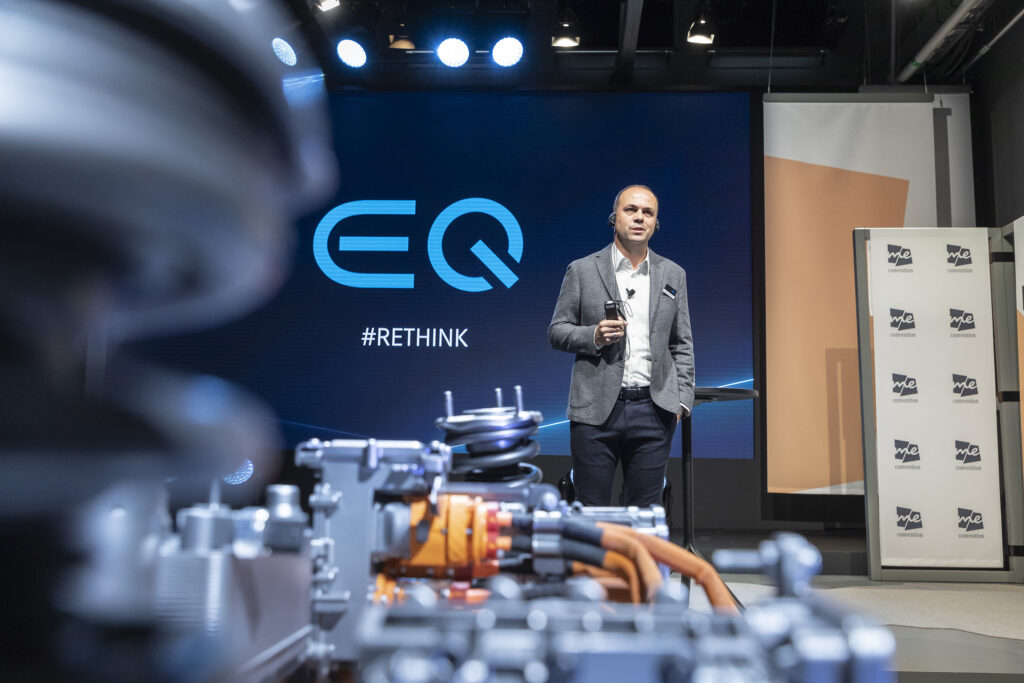
The first AMG of the new age is the EQS53. It’s a high-performance version of the new Mercedes-Benz EQS, the first model into production built on Mercedes-Benz’s first purpose-designed EV platform, known as MEA (for Modular Electric Architecture).
READ MORE: Mercedes-AMG unveiles V8-smashing EQS53 high-performance EV
READ MORE: AMG’s first PHEV: Meet the Mercedese-Benz GT63S E-Performance
READ MORE: ICE out as Mercedes-Benz plans all-electric range by 2030
The big, all-wheel-drive luxury liftback is one of the quickest cars AMG makes, with a claimed 0-100km/h time of just 3.4 seconds. it has more power than most of AMG’s potent V8s.
Numbers game for Mercedes-AMG in EV era
Even so, it doesn’t wear the 63 badge of AMG’s elite models. Jochen Hermann explains…
“That was a discussion; saying, ‘Okay, is it a 53 or 63?’. For me its quite clear it’s a 53,” he says.
“With the electric car, the easiest thing you can do is accelerate, but I think then it’s still not a performance car in my perspective. The difference between a 53 and a 63 is, most of the time, how much can you go on a racetrack.”
Want the latest EV news and reviews delivered to your inbox? Subscribe to our weekly newsletter!
The EQS53 is very quick, but hot laps of a circuit aren’t what it’s good at, Hermann says.
“It’s not a car for racetrack performance. Things like weight, the battery size, these kinda things… Considering this, I’m not sure if a 63 will be based on this car.”

Will the same thinking apply to the Mercedes-Benz EQE and the other coming EVs that will be based on the same platform as the EQS? “You don’t hear me arguing against this statement,” Hermann says.
So what must change if AMG is to develop EVs worthy of the 63 badge?
“I jump to the GT four-door car, because that describes, I think, the future technical approach that we will see.”
Hermann is talking about the recently revealed GT63S E-Performance version of the GT 4-door coupe. It’s AMG’s first-ever plug-in hybrid EV, and the most powerful road-going car the company has ever produced.
In Mercedes-Benz plug-in hybrids, Hermann says, the aim in battery pack development is energy density: “Gaining as many kilometres of electric range out of the battery, and still having enough space in the car for any kind of luggage in your trunk.”
“With the GT 4-door E-Performance car, we said we don’t care about the electric range of driving for this performance hybrid. What we do care about is that we have always the maximum constant power.”
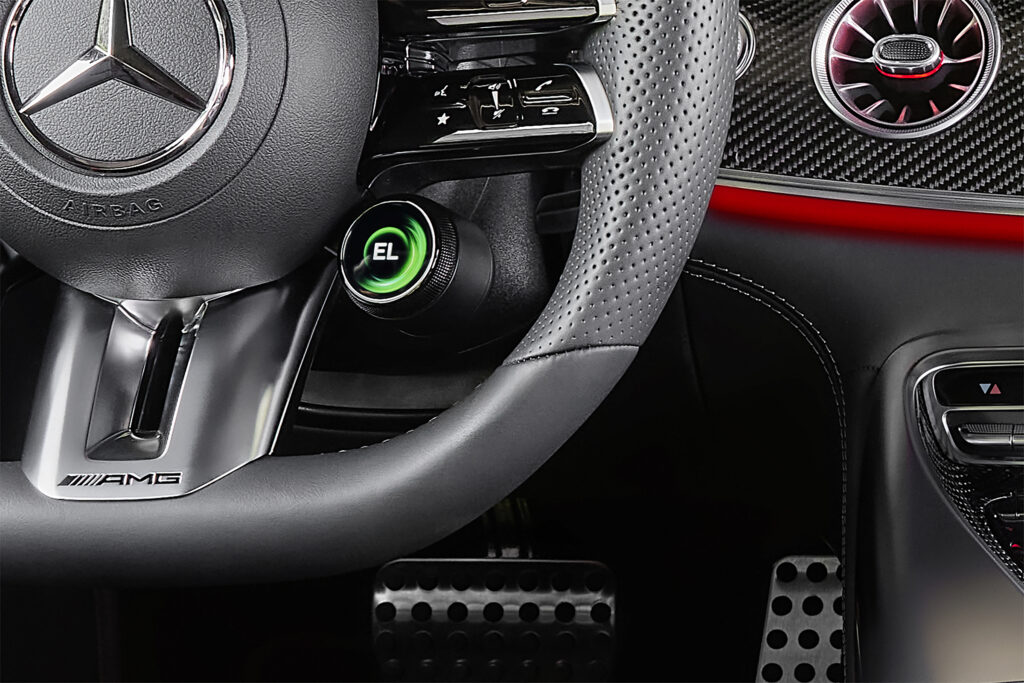
Maximising energy recovery through regnerative braking was another objective, he adds.
“So we came up with a battery with the most efficient power density. It’s energy versus power.”
EV energy density versus power density
The distinction is an important one. Energy density is measured in kWh, where power density is measured in kW. To understand the difference, let’s imagine two battery packs that, to look at, seem identical. Same size, same casing.
One can store 100kWh of energy, but can only deliver constant power of 100kW. An EV with this energy-dense battery pack will have a great driving range, but limited performance.
The other pack can store only 50kWh, but can deliver a constant 500kW. An EV with this power-dense battery pack will have immense performance, but its driving range won’t be great.
“If you look at the technical build-up of the battery, it starts with the cell technology,” says Hermann, who understands the subject better than most.
Before moving to AMG in 2020 he spent four years as head of electric drive development for Daimler, parent company of Mercedes-Benz (it’s set to be renamed Mercedes-Benz Group in February 2022).
Lithium-ion cell chemistries aren’t the same. Using different mixes of materials for the cell electrodes and electrolyte can deliver quite different characteristics when it comes to energy and power density.
For the pack in the GT 4-door 63S E-Performance plug-in hybrid, AMG aimed for power density above all else. Though it can store only 6kWh, enough to drive electrically for only 12 km, it can deliver 150kW for up to 10 seconds and 70kW continuously. Combined with a 4.0-litre twin-turbo V8 it can make quite a performance statement.
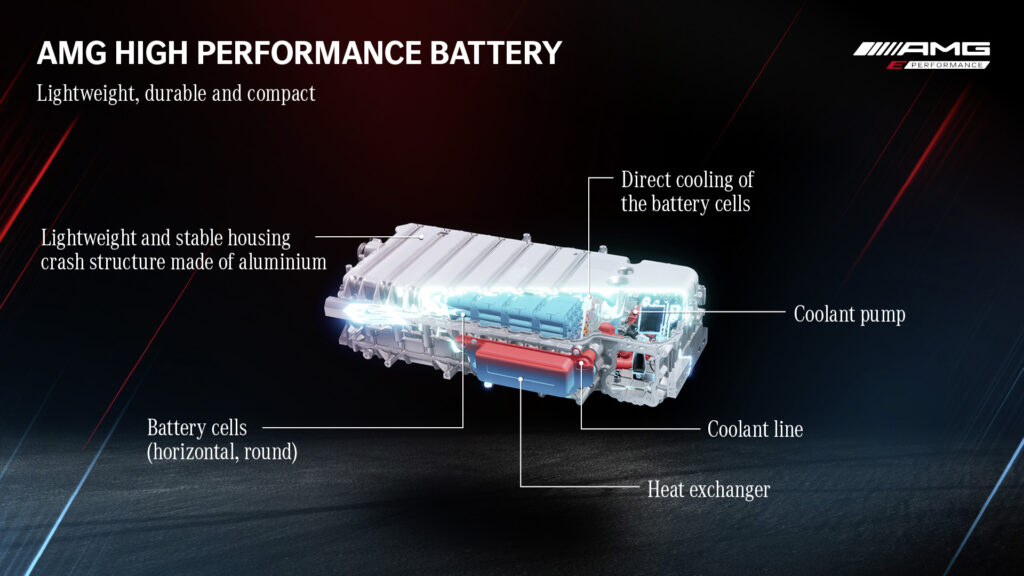
AMG’s engineers designed an innovative direct cooling system for the pack’s 560 cylindrical cells. Pumping a non-conductive liquid around them keeps their temperature in the zone to maximise power density.
This tech could be scaled up to EV battery pack size, but Hermann doesn’t think biggest will be best for AMG.
“I’m not a believer in building the largest batteries into cars.”
EV owners will learn from experience how much driving range they really need on a daily basis. “Things will change. Then charging will be an issue.”
“What I’m saying is people will get adapted. And then, coming back to a performance car, maybe we will offer cars with sufficient electric drive. I’m really, really thinking we have lots of opportunities.”
“I think you have to have a certain threshold for range, a comfort level that people accept. Okay, this is the minimum range you would want to see in a car, no matter how performance-oriented the car is. So I really think there is a threshold you where you can’t go beneath.”
What might the threshold be? Would around 500km according to the WLTP standard be about right? “I’d say yes,” Hermann responds. “But maybe you know in the future this value might change.”
Fast charging key to fast AMG EVs
“I think you have to have the right technology at the right point of time. At this point of time, range is good.”
Still, Hermann sees power-dense battery packs as being the right choice for future AMG EVs. And not only because they can be teamed with more powerful electric motors and harvest more energy through regenerative braking. “If you install this into the car, the one thing you get for free is fast charging.”
“I think fast charging would be something people would love to have in an AMG.”
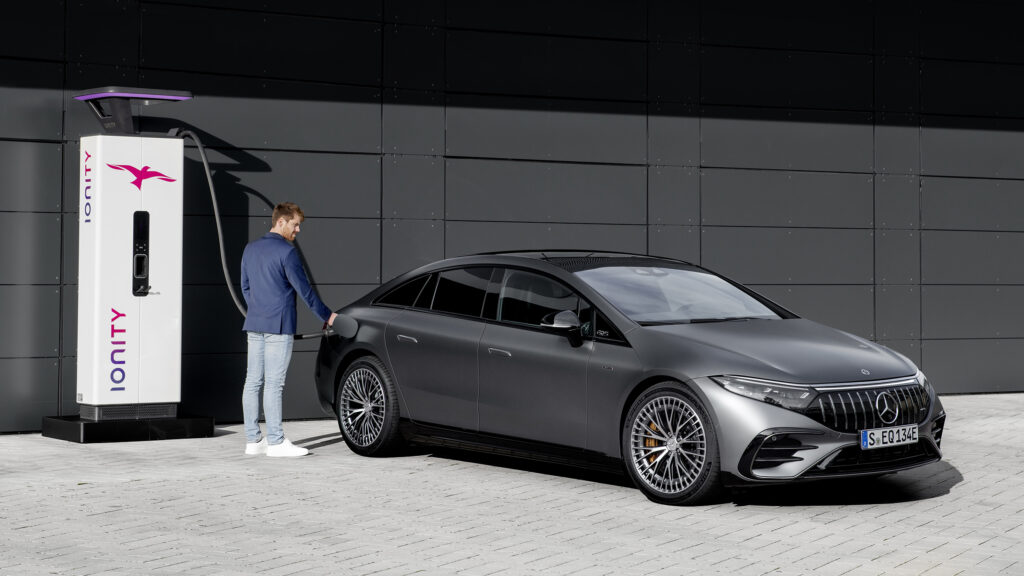
Does Hermann mean batteries that can take advantage of the latest generation of 350kW DC fast chargers?
“Maybe even more in the future. At the moment this is kind of the limit, what you have on a European Ionity fast charging station, but why not more in the future?”
Motor technology is the other arena in which AMG sees potential for high-performance progress. In July this year Daimler bought the small UK company Yasa. Based in Oxford, it specialises in the design, development and manufacture of axial-flux e-motors.
Yasa’s big claim to fame so far is that it supplies one of the three e-motors in the Ferrari SF90 Stradale plug-in hybrid. Theirs is the one sandwiched between the supercar’s twin-turbo V8 engine and its eight-speed double-clutch transmission.
AMG was behind the Yasa deal, Hermann reveals. “Another company (Daimler) bought it for us, but AMG was the driver, saying, ‘Hey, this is the technology that would really be something valid for an AMG performance car’.”
Axial flux electric motors for electric AMGs
Pretty much every EV in production today, including Mercedes-Benz’s, uses radial-flux motors. These compact, barrel-shaped power-kegs are normally installed in the centre of the axle.
Axial-flux motors are a different shape. They’re larger in diameter, but much slimmer end-to-end. And they’re easily able to match or exceed the performance of radial-flux designs.
Hermann believes axial-flux motors will power purpose-designed AMG EVs of the future. He’s talking about models that will be based on the AMG.EA platform announced earlier in 2021 by Daimler chairman and Mercedes-Benz boss Ola Källenius.

According to Herman, the new platform will be the foundation for the EVs that will take the place of the GT and GT 4-door that currently top the company’s line-up.
Less costly mainstream AMG EVs will be based, as they are today, on Mercedes-Benz models. “Both pasts will be put into the future,” is the way Hermann puts it. “And the AMG.EA will be definitely the path for future full AMG cars only.”
Asked if Yasa-designed axial-flux motors for the AMG.EA-based cars would be installed inside their wheels Hermann is evasive. “I didn’t say that, but you know…”
But the Yasa motor “has so many opportunities”, he adds. This sounds like a very definite maybe…
The company that built its reputation on ICE-age thunder has a strategy for the coming EV era. Instead of thundering V8s and crackling turbo fours, AMG will in the future rely on power-dense battery packs and innovative e-motors.
Still, Hermann thinks the transition isn’t imminent.
“It’s going to be a few years down the road until we’re fully electric, talking of AMG. I’m not talking of Mercedes, but talking of AMG. I really think we will have a long time for the V8 engines.”
“It’s like for the entire industry; if you know there’s change coming you had better prepare for the change.”

